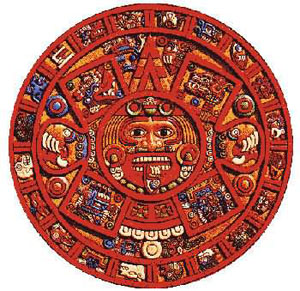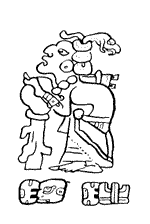 |
 |
 |
 |
 |
 |
 |
 |
 |
 |
 |
 |
 |
 |
 |
 |
 |
 |
 |
 |
 |
 |
 |
 |
 |
 |
 |
 |
 |
 |
 |
|
|
 |
|
|
|
 |
|
|
|
The ancient Mayas lived by a complex set of religious beliefs. They believed all things held power and was based upon the thought that the world was highly ordered. Many of their ceremonies were based on nature, especially the sky.1 They believed there was an afterlife and how a person died determined where they spent it. People who hung themselves, were killed in battle or sacrificed, priests and rulers and “...women who died in childbirth...” all went directly to the Maya paradise.2 |
|
|
|
Religious beliefs and ceremonies played a very large role in the lives of the ancient Maya. Priests, in the Maya, were highly regarded by the society at large. They came from the elite class, usually through recruitment by older priests. These men were in charge of rituals and ceremonies. They served as both ruler and religious leader to the different Maya communities, giving religion an awesome authority and power over the common Maya people.3 However, it was only men who ever held this power. Women did not have a leadership role in Maya religion, beyond being a follower and believer. Women could be found in the ceremonies as participants. Ceremonies were for all Maya, males and females both took part in these rituals. |
|
|
|
Religious beliefs and ceremonies played a very large role in the lives of the ancient Maya. Priests, in the Maya, were highly regarded by the society at large. They came from the elite class, usually through recruitment by older priests. These men were in charge of rituals and ceremonies. They served as both ruler and religious leader to the different Maya communities, giving religion an awesome authority and power over the common Maya people. However, it was only men who ever held this power. Women did not have a leadership role in Maya religion, beyond being a follower and believer. Women could be found in the ceremonies as participants. Ceremonies were for all Maya, males and females both took part in these rituals. A major part of many Maya ceremonies was the ritual use of blood. The Maya people would offer blood to the gods as sacrifices. Often it was blood from worshipers and was then taken and spattered onto the idols. Pictures from the time depict both men and women taking part in this ritual. While women did not have a role in religious hierarchy, they did participate fully in religious life. It was not only the common people who took part in religious ceremonies and rituals; the elite also participated. Elite women are shown practicing bloodletting.4 Women also participated in other ways as well. |
|
|
|
 |
|
|
|
|
|
Mayan Calender |
|
|
|
|
|
Dancing often took place during various ceremonies and in that case, women and men celebrated separately. Each sex had their own dance and rarely did men and women dance together.5 Women and men also dealt with boys and girls separately. Women would take care of the religious needs of girls and men would for boys.6 There is also depictions of women having a role in the different celebrations during the year. One such picture shows a woman on stilts, performing a dance to help with the coming year’s crop.7 Another aspect, connected to the use of blood in Maya beliefs, of rituals was sacrifices. Sacrifices ranged from bloodletting, the most common form of sacrifice to animal sacrifice to occasionally human sacrifices.8 Women participated equally in this custom as well. “Women and children were sacrificed just as often as men.” by the Maya priests.9 |
|
|
|
 |
|
|
|
While Maya women did not have an official role as religious leaders, they were found in Maya mythology. None of the main deities were women, but there were a few goddesses among them. These were associated with womanly aspects of life, such as Ix Chebel Yax, the patroness of weaving.10 The deity associated with suicide was also female, which may not have been directly linked to being a woman but was most likely not viewed as manly, and therefore would have been connected to women. There was also a deity called the Old Woman Goddess, who was the patroness of death and destruction.11 Beyond those few goddesses, women are not found in Maya beliefs. It is structured very similarly to their religious system, where women do not have an official role but rather support the male leaders. |
|
|
|
|
|
Depiction of Ix Chebel Yax |
|
|
|
1 Morley and Brainerd, Ancient Maya, 459-60.
2 Morley and Brainerd, Ancient Maya, 467.
3 Morley and Brainerd, Ancient Maya, 461.
4 Morley and Brainerd, Ancient Maya, 480.
5 Morley and Brainerd, Ancient Maya, 482.
6 Morley and Brainerd, Ancient Maya, 494.
7 Morley and Brainerd, Ancient Maya, 489.
8 Morley and Brainerd, Ancient Maya, 461.
9 Morley and Brainerd, Ancient Maya, 484.
10 Morley and Brainerd, Ancient Maya, 476.
11 Morley and Brainerd, Ancient Maya, 466 |
|
|
|
 |
|
|
 |
|
|
|
|
 |
|
|
|
|
|
|
|


